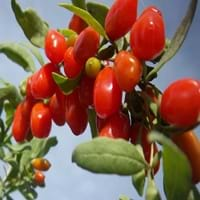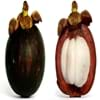Health Benefits
Anti-oxidant properties, Eye care, Helps in cartilage regeneration, Regulates Blood Sugar, Treatment of osteoarthritis
Cancer prevention, Cures gastro-intestinal troubles, Heart care, Increase in haemoglobin, Prevents high blood pressure
General Benefits
Boosts immune system, Digestive aid
Anti-inflammatory properties, Boosts immune system, Digestive aid, Eye care, Flu treatment, Helps in weight loss, Maintains healthy cholesterol level, Treatment of common cold
Skin Benefits
Anti-aging benefits, Reduces wrinkles, Treatment of skin diseases
Anti-aging benefits, Brightens and lightens complexion, Reduces wrinkles, Skin revitalization, Treatment of dark spots
Hair Benefits
Protects hair, Regulates hair growth
Prevents hair loss, Promotes longer and healthier hair, Protects hair, Remedy for split ends, Treatment of dandruff
Allergy Symptoms
Anaphylaxis, Itching, Sneezing, Wheezing
Abdominal pains, Anaphylaxis, Vomiting
Side Effects
May interact with some drugs
Allergic reaction
Best Time to Eat
Any time except an hour after meal, Don't consume at night and before bed
As a snack in the late afternoon, Don't consume at night and before bed, Don't eat after meal, Morning time (before lunch)
Vitamin B5 (Pantothenic Acid)
Vitamin C (Ascorbic Acid)
Vitamin K (Phyllochinone)
Calories in Fresh Fruit with Peel
Calories in Fresh Fruit without Peel
Not Available
Not Available
Calories in Canned Form
Not Available
Varieties
No Types
Merryweather Damson, Shropshire Prune, President plum, Damson farleigh and Damson langley bullace
Color
Scarlet red
Dark purple
Inside Color
Orange
Yellow
Taste
Slightly bitter, Tart
Juicy, Sweet, Tart
Soil Type
Well-drained
Clay, Loam, Moist, Sandy loam, Well-drained
Climatic Conditions
Cold, Hot
Cold
Facts about
- Study says a man named Li Qing Yuen used to eat goji berries daily and lived for 252 years.
- They are also known as wolfberries in India & China.
- This fruit is used for spiritual purposes at many places.
- The name Damson originates from the original name 'Damacus plum'.
- Damson wine was very popular in 19th century.
- This fruit is often used in jams due to its slightly tart behaviour.
Top Producer
China
United Kingdom
Other Countries
Canada, France, India, United States of America
Ireland, United States of America
Top Importer
United States of America
United States of America
Top Exporter
China
France
Botanical Name
Lycium barbarum
Prunus domestica subsp. insititia
Synonym
Wolfberry
Not Available
Subkingdom
Tracheobionta
Tracheobionta
Division
Unknown
Magnoliophyta
Class
Unknown
Magnoliopsida
Subclass
Asteridae
Rosidae
Family
Solanaceae
Rosaceae
Species
L. barbarum
Prunus domestica subsp. insititia
Generic Group
Not Available
Not Available
Difference Between Gojiberry and Damson
We might think that Gojiberry and Damson are similar with respect to nutritional value and health benefits. But the nutrient content of both fruits is different. Gojiberry and Damson Facts such as their taste, shape, color, and size are also distinct. The difference between Gojiberry and Damson is explained here.
The amount of calories in 100 gm of fresh Gojiberry and Damson with peel is 32.00 kcal and 46.00 kcal and the amount of calories without peel is Not Available and Not Available respectively. Thus, Gojiberry and Damson belong to Low Calorie Fruits and Low Calorie Fruits category.These fruits might or might not differ with respect to their scientific classification. The order of Gojiberry and Damson is Solanales and Rosales respectively. Gojiberry belongs to Solanaceae family and Damson belongs to Rosaceae family. Gojiberry belongs to Lycium genus of L. barbarum species and Damson belongs to Prunus genus of Prunus domestica subsp. insititia species. Beings plants, both fruits belong to Plantae Kingdom.









